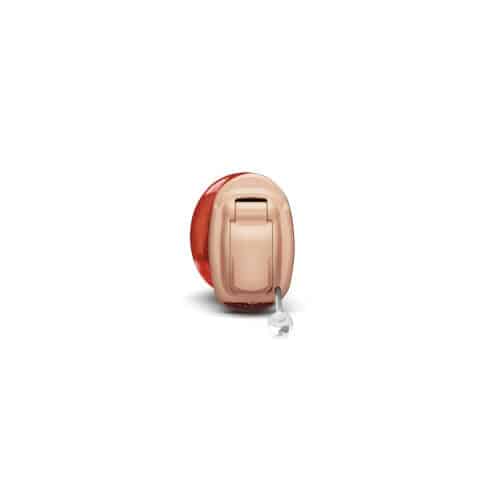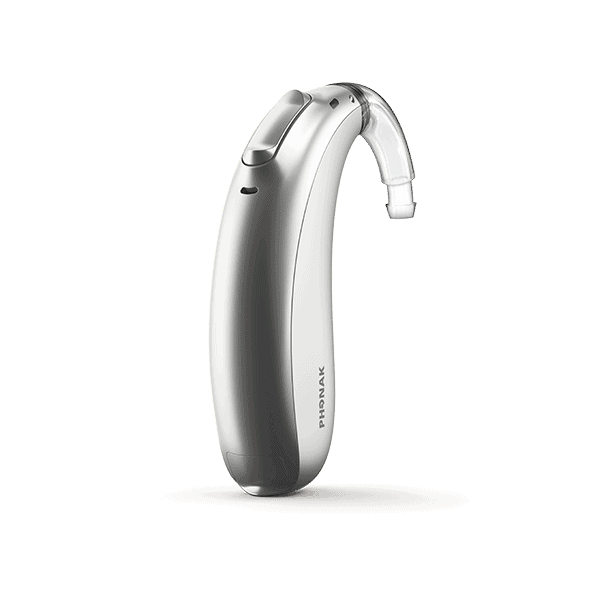Hearing Aids
Hearing aids are an investment in your hearing health – and your overall health. With 1 in 8 Americans with hearing loss and hearing loss forecasts getting worse as a result of increased noise exposure, hearing aids will likely become more essential as we get older.
Luckily, the cumbersome hearing devices you may remember your grandparents wearing are now a distant memory. The latest hearing technology is advanced and discreet. In reality, you'll probably have friends or colleagues wearing hearing devices you didn't even notice!
A hearing aid is not simply a device which amplifies sound. It is a complex medical instrument with technology that an audiologist can customize to suit your hearing needs. Although hearing devices don't help you restore your original hearing abilities, they help by enhancing your hearing and listening skills and reducing listening fatigue.
There are so many types of hearing devices, that it's easy to get confused. To help guide you, here is a list of some of the most common types we offer.
Styles of hearing aids

Invisible-in-Canal (IIC)
Invisible-in-canal (IIC): This style is inserted deep into the ear canal and is virtually undetectable. They are appropriate for people who have mild to moderate hearing loss. Remote controls are included with some IIC models to allow you to alter the volume.

Completely-in-Canal (CIC)
Completely-in-canal (CIC): These are identical to IICs, except they're a little bigger. They're pulled out of the ear canal with a short wire. The CIC hearing aids are made to help those with mild to moderate hearing loss.

In-the-Canal (ITC)
In-the-canal (ITC): The term "in-the-canal" refers to a hearing device that fits inside your ear canal. ITC hearing aids are larger than IIC or CIC hearing aids, making them easier to use for those with dexterity issues. ITCs are designed to treat a wide range of hearing problems, from mild to severe.

Receiver-in-Canal (RIC)
Receiver-in-canal (RIC): These are almost identical to BTE hearing aids, except for the sound transmission method. The receiver of RIC hearing aids is placed in your ear canal. At the same time, the electrical components are housed in a plastic shell behind your ears.

Behind-the-Ear (BTE)
Behind-the-ear (BTE): This style comprises two parts: a clear plastic tube that goes into the ear and provides sound and a plastic enclosure that sits "behind the ear" and stores the hearing devices's electronic components. BTE hearing aids are recommended for their versatility in handling a broad spectrum of hearing loss, from slight to severe. They are also more likely to have the longest-lasting batteries and the most features.
The latest hearing aid features
Directional Microphones
The hearing aid's quick processing platform amplifies and analyzes the noises you want to hear. Directional microphones take up only the essential sounds in your environment.
The quick processing platform amplifies and analyzes the sounds you want to hear. This means that the hearing device solely concentrates on the sounds you hear and ignores background noise.
Bluetooth Hearing Aids
One of the most exciting technologies to enter the hearing market in recent years is Bluetooth. It is a wireless communication system that allows data to be sent between two or more electronic devices with the help of leading technology businesses.
Bluetooth technology has several benefits. You may use your hearing aid to transfer sound to both ears, listen to music, and speak directly to it. This means you won't have to remove your hearing device to make a phone call.
Telecoil
Telecoils are included in many hearing aid types. This function allows you to connect to induction loop systems in public places.
This allows you to transmit precise sound directly to your ears via electromagnetic waves.
Rechargeable Hearing Aids
Rechargeable hearing aids have batteries that do not need to be removed as often as hearing devices with typical disposable batteries. You dock your hearing aids on a charging device every night, similar to how iPhones recharge, instead of replacing the batteries manually. The hearing industry has been transformed by rechargeable batteries. Hearing aids can now be used for a whole day on a single charge.
